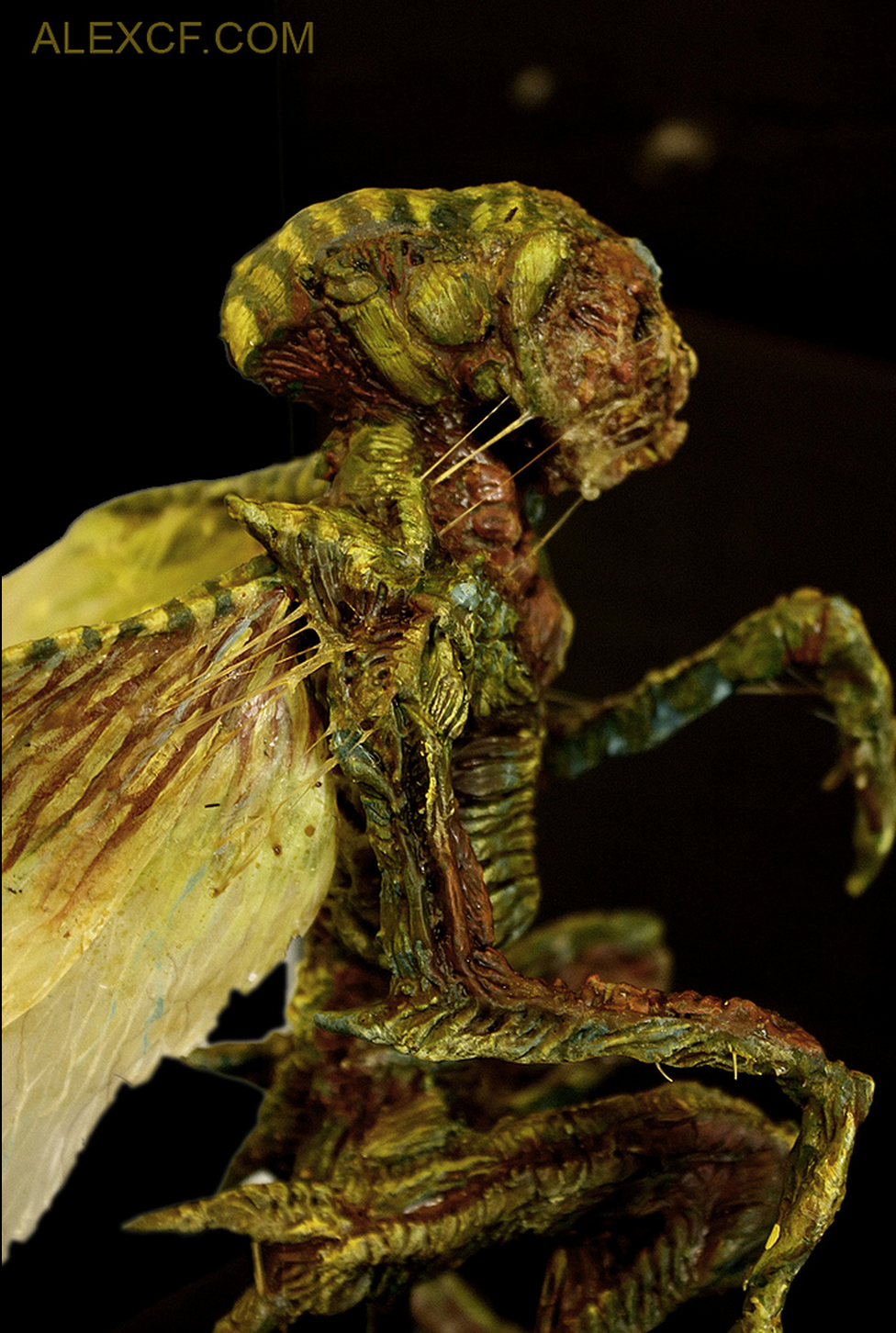All images copyright Alex CF 2014. Please credit and attach a link if used outside this website.
Species: Homomimus Dentata (Tooth Faeire)
Arthropod, Carnivore
“The preserved specimen of the parasitic insect “Homomimus Dentata”
There are two distinct species of Homomimus or faerie, which although share a classification (Homomimus means ‘human mimic) evolved from entirely separate species. One is a form of insect, with chitinous exoskeletal armour, the other is a form of mammal, complete with endoskeleton and traits which have bizarrely similar – yet miniaturized – anatomical similarities to that of humans and other apes.
Both species are almost entirely hive building; often in trees or any space large enough to house up to a thousand individuals. The nests themselves are built with secretions from their saliva mixed with leaf litter, to form a cement like substance. Both species are carnivorous so do not centre hive building around food production. They are located on different continents so very rarely do they share the same areas of land. All but two of these species form collective families. The two “lone” species are the honeycomb faerie and the parasitic faerie – Homomimus Dentata.
Homomimus Dentata, or the “Tooth faerie” has no teeth. In fact to all intents and purposes they do not have any equipment in their heads, besides a large sphincter mouth. This highly dextrous opening is how they consume food. Homimums Dentata do not have a penchant for human teeth despite the mythology. It is believed that the story originated when a large specimen attempted to attack a small childs face, prizing teeth and gum from the mouth with its sharp limbs. They are vicious and cunning creatures, which is ever more clear from the specimen presented here.
Merrylin was obsessed with Homomimus. He found their evolutionary traits completely fascinating and unique and very reminiscent of ingenious fish species who use lures and traps to find food. Homimimus erectus and Homomimus arachnida some of his favourite. But both were eclipsed by the Tooth fairy. The tooth fairy is an invasive parasite. Introduced to the Americas by stowing away in burrows in the masts of ships, they soon encountered the mammalian species of homomimus. There are very distinct differences in intelligence in these species. mammalian homomimus are very simple creatures, they are aggressive, hunt in packs and live on base instinct almost entirely, where as their insect counterparts are very bright.
From studies of invaded nests, the tooth fairy, when very young is about three centimeters tall. It will locate its prey, and attach itself to the spine of the victim. slowly its body will produce tendrils which will burrow into the flesh of its host, releasing a mixture of sedative and suggestive chemicals into its body. Over a week, the parasite will use this puppet-like extension of itself to not only enter the nest of its captor without fear of attack, to lay its eggs amongst those of its mammalian cousin, it will also release pheromones that will cause chaos and confusion in the hive. Eventually securing the nest for itself and its brood and consuming the readily available population of faeries within the nest.
Within a month the body of the host will have been absorbed by the tooth fairy, leaving scraps of flesh bound to its victor. This specimen has all but consumed its host, leaving only the face to cover the hideous maw it uses to feed.
Homomimus Dentata devastated the native mammalian Homomimus in North America, leaving it almost extinct. Very few specimens were found after the late 18th century.









